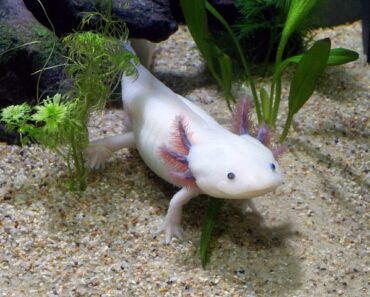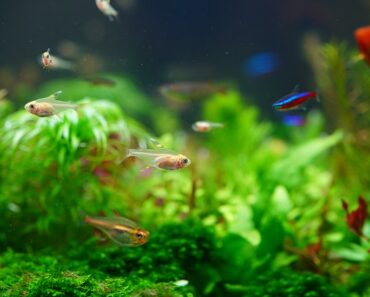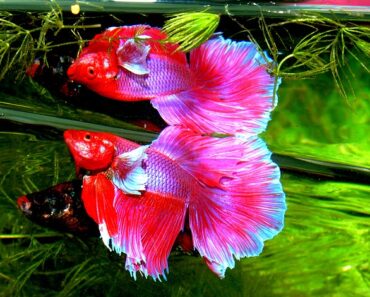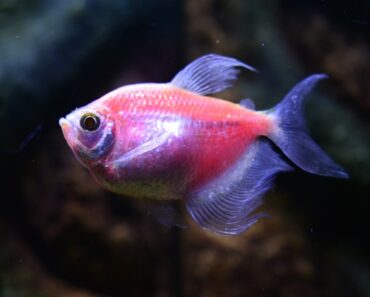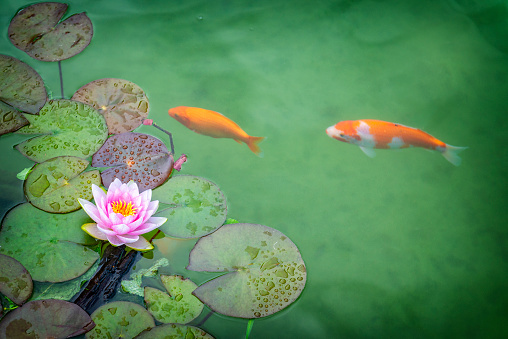
However, making a pool and making it correspond to your desires is not always easy and certain precautions can be considered in order to guarantee, on the one hand the good use of the pool, and on the other hand the conformity of the installation with the regulations in force. On more technical advice, it will then be necessary to look at the installation of your pond in your garden, the location to choose, as well as the work to organize to make it yourself or install it already built. We will then have to make an overview of the population of your pond, and the various accessories necessary for the life of your fish, and the beauty of your pond.
The point on the regulations
As a reminder, a pond is a body of water, created on a determined area in order to shelter an adequate fauna and flora. This detailed definition allows a first approach of the ornamental pond, which allows us to question two points. Is there any particular regulation concerning a water body? Are there specific rules attractive to the protection of fauna and flora?
Concerning water bodies, it should be noted that French legislation is relatively precise concerning swimming pools, natural swimming pools, ponds (of more than one hectare). Only these water points are concerned by a precise and detailed regulation, excluding in fact the approval basins. However, a few precautionary rules must be observed in order to guarantee the safety of the youngest users of the pond, to prevent any risk of drowning or injury from any fall. In fact, in the absence of specific regulations, try to restrict access to your pool for more fragile people (elderly people and young children), in order to prevent any damage. For example, a fence with a gate would be ideal for the surrounding area.
As far as fauna and flora are concerned, there is no specific legislation for the animals and plants currently on the market. However, if you wish to import them from abroad, you will have to comply with the rules relating to the species you wish to acquire. Indeed, certain protected species cannot be imported into France, and you could be in big trouble if, without authorization, you have brought plants or animals from abroad to find a place in your pond. Pretending ignorance of a regulation will not give you the right to transgress it and you will be held responsible here as well.
With regard to the construction of your pond, it should be noted that no application for a building permit is to be submitted to your town hall. However, it may be wise to make a declaration of work, so that your neighbors are aware of your intention and the nuisance you are about to cause. Concerning these works, do not hesitate to contact the technical services of your municipality which could inform you about the rules relating to your municipality: planning rules, rural rules, local rules. These points may concern the risks present on your land (slope, soil instability), or the treatment of wastewater that you may discharge. Do not hesitate to contact your town hall to clarify these points.
After these few remarks, it remains to take a closer look at the pond itself, and its installation in your garden.
Building your pond
The construction of your pond is the central step of its realization. It is also the final step because many preliminary verifications must be carried out.
First, you must first establish the plan of your pond, its extent, shape and depth. This must be done according to the space you have available, keeping in mind that you will not be able to go beyond the space you currently have at your disposal. This step therefore requires, on the one hand, the selection of a plot of your garden for the installation of your pond, and on the other hand, the planning of this project in a concrete manner.
The election of your plot of land is very important and you will have to pay special attention to it. Your pond being a body of water in perspective, it seems logical that your plot of land should be chosen according to its slope. Only perfectly flat land should be chosen, in order to guarantee a good stability of your pond, and to avoid making too many holes. Also make sure that you have enough space to implement your project. More than the simple foundations of your pond, you must take into account its environment which will have to be added later: plantations, decorations, benches, bridges… The whole of the final realization must influence your decision.
Once you have chosen your corner of the garden and established your foundation plan, all you have to do now is proceed with the work to install your new ornamental pond.
Which pond to choose?
There are, of course, different types of ponds, of different sizes and shapes. The ponds that you can find on the market offer the advantage of being ready to install, requiring only a hole before burying them. Nothing could be simpler than to install your garden ready to install. Even if the commercially available ponds are of high quality and will satisfy you, it is possible that they may not cover all of your expectations, leaving some of your ideas on the bench.
To follow up on all your ideas, nothing is simpler than to build your own pool, from its conception to its realization, and for this you have different techniques available. In any case, as to install a ready-to-install pond, you have to make a stepped hole, of the shape you want and the depth you want, even if a depth of 80 cm for your “abyss” will prove to be relatively good for your fish. The staircase system will allow you to plant your pond with plants of different levels. Once the hole has been made (we recommend the use of a mini-excavator), you will have to install geotextile on all the walls, before installing either a waterproof tarpaulin, specially designed for ponds, or pouring concrete that you will waterproof afterwards, so that it loses some of its porosity.
By designing your own pond, you are sure to give free rein to your imagination, thus being able to make a pond that suits you. Once you have put it in water, you will have to equip your aquarium before you consider introducing your new fish.
The accessories necessary for the proper functioning of the pond
As in the field of home aquariums, the ecosystem you are trying to create in your pond needs a few accessories to function properly. Of course, many brands of products for indoor aquariums also offer accessories for your ponds, being equally developed products.
To begin with, the accessory that will be indispensable to you, no matter what installation you make afterwards, is the pump. This one allows you to aerate the water of your pond, creating a current on its surface, thus avoiding the too important proliferation of algae. The advantage of this pump is that you can then use it as a complement to your decor. It is not uncommon to find various fountains on the market that are connected to the water in your pond, allowing a closed circuit circulation of your water. You will thus add a natural effect to your fish pond, while aerating it. You can either opt for a fountain that you will buy in stores, or you can make your own cascade on a reduced scale.
The second accessory, which is not essential but will make your pond maintenance much easier, is the filter. Just like the filter of your indoor aquarium, this one allows for regular maintenance of your pond water, capturing your fish’s excrement. Being outdoors, subject to natural aggressions, the water in your pond could get dirty very quickly. The maintenance of your water being crucial to allow you to enjoy your pond, the filter can prove to be a significant ally.
You can also accessorize your pond as you wish, for example by installing spotlights all around it, which will illuminate the water surface or the surrounding plants. If your pond requires a bridge, this too can be illuminated to make it more attractive to the eye.
Once this step has been completed, all you have to do is insert the fauna and flora into your pond.
Life in your pond
First of all, concerning the flora, you should know that there are various varieties of aquatic plants adapted to the outdoors, which can be found both in the water and on your banks. Make sure to organize your pond by placing the most important plants at the bottom, and the less imposing plants on a step of your stairs. You can find various water lilies, adapted to your pond, in the shops. Concerning the water lilies, make sure you choose a species that does not proliferate much, because you could quickly find yourself invaded by this plant, which can be relatively cumbersome. Other species, such as small reeds or bamboos could find a place near the pond, or even within the pond.
For the fauna, various species of fish can be inserted in your new pond, depending on its size in particular. For ponds of all sizes you can insert goldfish, which can reach a size of 12 to 15 cm. These are easy to reproduce and will therefore need to be regulated. In the same way, you can integrate larger fish, such as sturgeons, which are sometimes assimilated to freshwater sharks, into your pond. For larger goldfish, you can choose Koi carp, which can be up to 70 cm long and regulate the population of your pond.
Your goal is therefore to create a small-scale ecosystem that will self-regulate over time.

